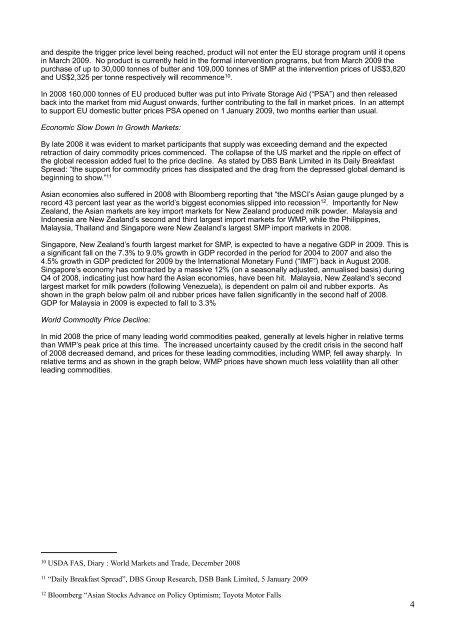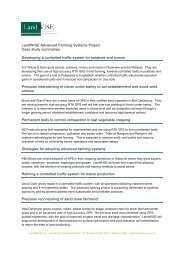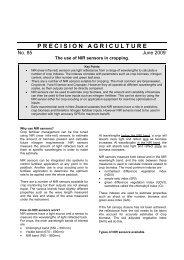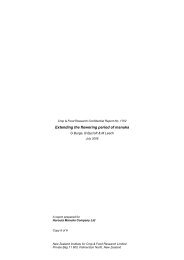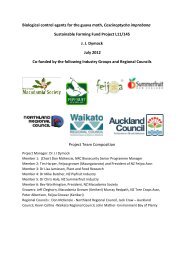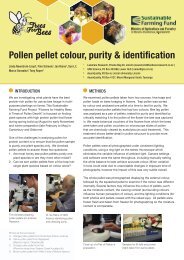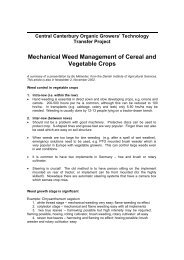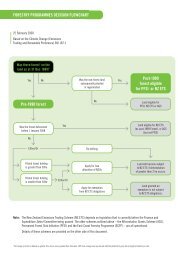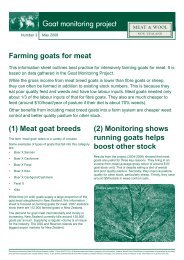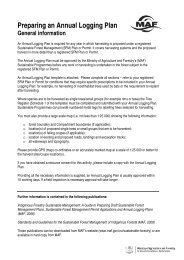Create successful ePaper yourself
Turn your PDF publications into a flip-book with our unique Google optimized e-Paper software.
and despite the trigger price level being reached, product will not enter the EU storage program until it opens<br />
in March 2009. No product is currently held in the formal intervention programs, but from March 2009 the<br />
purchase of up to 30,000 tonnes of butter and 109,000 tonnes of SMP at the intervention prices of US$3,820<br />
and US$2,325 per tonne respectively will recommence 10 .<br />
In 2008 160,000 tonnes of EU produced butter was put into Private Storage Aid (“PSA”) and then released<br />
back into the market from mid August onwards, further contributing to the fall in market prices. In an attempt<br />
to support EU domestic butter prices PSA opened on 1 January 2009, two months earlier than usual.<br />
Economic Slow Down In Growth Markets:<br />
By late 2008 it was evident to market participants that supply was exceeding demand and the expected<br />
retraction of dairy commodity prices commenced. The collapse of the US market and the ripple on effect of<br />
the global recession added fuel to the price decline. As stated by DBS Bank Limited in its Daily Breakfast<br />
Spread: “the support for commodity prices has dissipated and the drag from the depressed global demand is<br />
beginning to show.” 11<br />
Asian economies also suffered in 2008 with Bloomberg <strong>report</strong>ing that “the MSCI’s Asian gauge plunged by a<br />
record 43 percent last year as the world’s biggest economies slipped into recession 12 . Importantly for New<br />
Zealand, the Asian markets are key import markets for New Zealand produced milk powder. Malaysia and<br />
Indonesia are New Zealand’s second and third largest import markets for WMP, while the Philippines,<br />
Malaysia, Thailand and Singapore were New Zealand’s largest SMP import markets in 2008.<br />
Singapore, New Zealand’s fourth largest market for SMP, is expected to have a negative GDP in 2009. This is<br />
a significant fall on the 7.3% to 9.0% growth in GDP recorded in the period for 2004 to 2007 and also the<br />
4.5% growth in GDP predicted for 2009 by the International Monetary Fund (“IMF”) back in August 2008.<br />
Singapore’s economy has contracted by a massive 12% (on a seasonally adjusted, annualised basis) during<br />
Q4 of 2008, indicating just how hard the Asian economies, have been hit. Malaysia, New Zealand’s second<br />
largest market for milk powders (following Venezuela), is dependent on palm oil and rubber exports. As<br />
shown in the graph below palm oil and rubber prices have fallen significantly in the second half of 2008.<br />
GDP for Malaysia in 2009 is expected to fall to 3.3%<br />
World Commodity Price Decline:<br />
In mid 2008 the price of many leading world commodities peaked, generally at levels higher in relative terms<br />
than WMP’s peak price at this time. The increased uncertainty caused by the credit crisis in the second half<br />
of 2008 decreased demand, and prices for these leading commodities, including WMP, fell away sharply. In<br />
relative terms and as shown in the graph below, WMP prices have shown much less volatility than all other<br />
leading commodities.<br />
10<br />
USDA FAS, Diary : World Markets and Trade, December 2008<br />
11<br />
“Daily Breakfast Spread”, DBS Group Research, DSB Bank Limited, 5 January 2009<br />
12<br />
Bloomberg “Asian Stocks Advance on Policy Optimism; Toyota Motor Falls<br />
4


